I recently hosted guests on our very first Madikwe Safari and Marataba Conservation Experience and was fortunate enough to take the wicked combination of the Canon EOS R6 body and 600mm F4.0 IS III lens for a spin (Check out the full trip report and highlights video here).
This was, to an extent, by design as this is after all the peak of the rainy or green season here in South Africa. Dense stands of long grass and foliage can make for some challenging photography BUT I am a firm believer that the upside of the rich, vibrant colours and contrasts of the green season make it a fantastic time to travel.
You can check out this post by Johan where he echo's my sentiments.
I thought that rather than sharing "another" review i'd simply take 6 images shot on the canon EOS R6 with the 600mm F4.0 IS III lens and elaborate on how the combo helped me create the frames.
I hope you'll enjoy and that you'll perhaps find some inspiration!
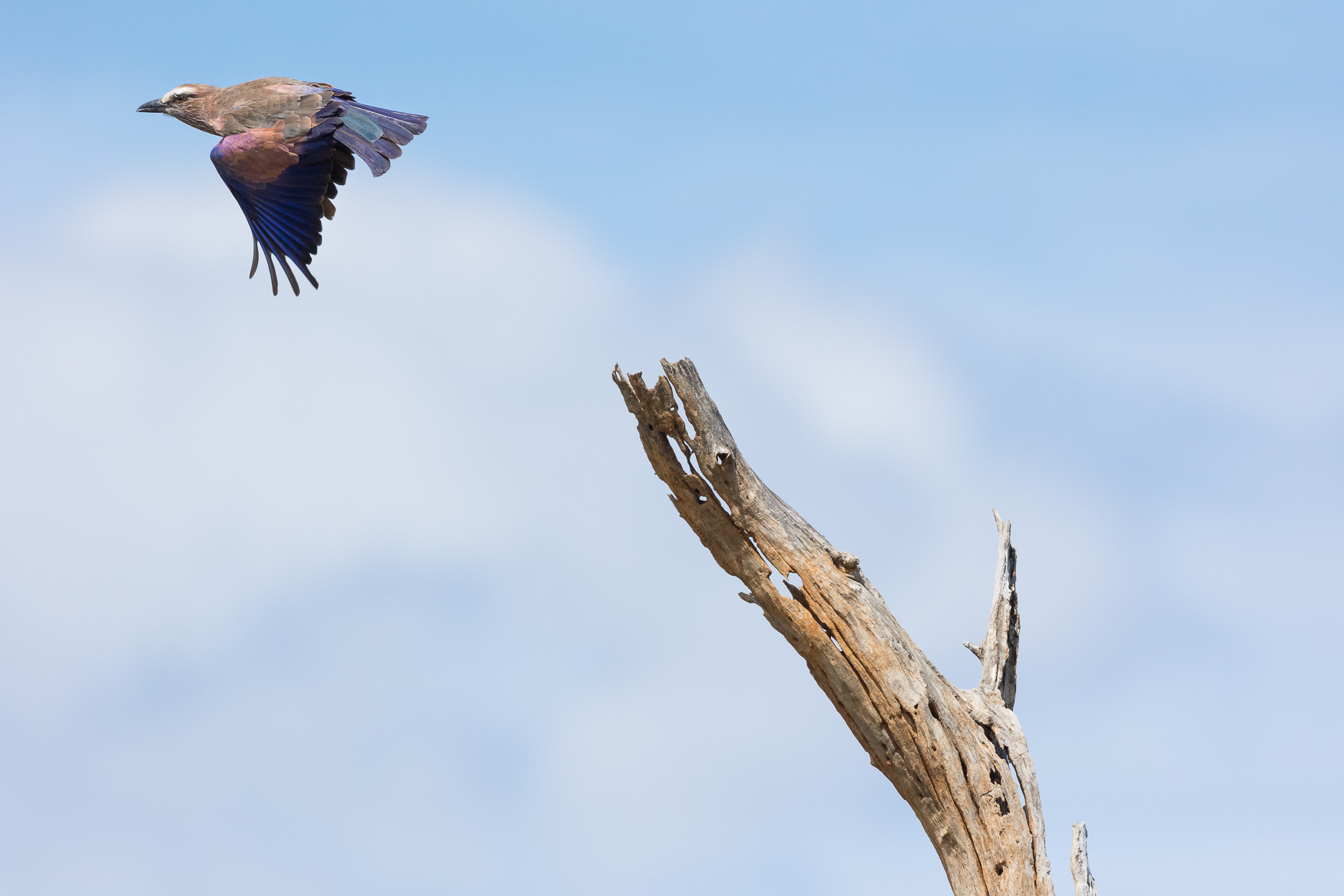
This first image is far less about the subject matter and actual frame itself and more about showcasing the power of the Canon EOS R6's autofocus capabilities.
At 600mm you don't have much "wiggle room" when composing images. By that I mean you can't pull back and leave a bit more space for the subject to move through the frame or incase you might clip a wing as a bird almost doubles in size as it opens its wings. This means that you're going to rely heavily on a combination of accurate AF tracking backed by a high frame rate in order to get the shot.
This entire scene came together so quickly I didn't have time to change the shutter mechanism, to Electronic mode (giving you an eerily silent but deadly fast frame rate of up to 20FPS on the R5 and R6) and had to make do with the 12 FPS in mechanical mode. Had I made the switch I would have had several frames to choose from both from positioning in the frame but, more importantly, wing and head position.
The most important part of this image for me is that it showcases how the Canon mirrorless system offers 100% AF coverage and tracking, ensuring that a subject like this Roller is tracked accurately to the edge of the frame time and time again.
Bare in mind that this is the full frame at 600mm - no cropping at all.
Whilst the R5 and R6 have a number of differences, their autofocus systems are very similar. To get an idea of just how effective the new Animal AF setting is at finding and tracking wildlife subjects you can check out this video I recorded using the Canon EOS R5 last year.
It really is a game changer and works exactly the same on RF and EF lenses. The only slight change is in the effective AF area which is restricted and reduced when shooting with either the Canon RF 600mm F/11 or Canon RF 800mm F/11. Even then though, it's remarkable to see what these systems offer in terms of autofocus.
As if that wasn't enough, both the 600 and 800mm F/11 are compatible with a 2X converter which takes you too 1200mm or 1600mm @ F22 - with autofocus!
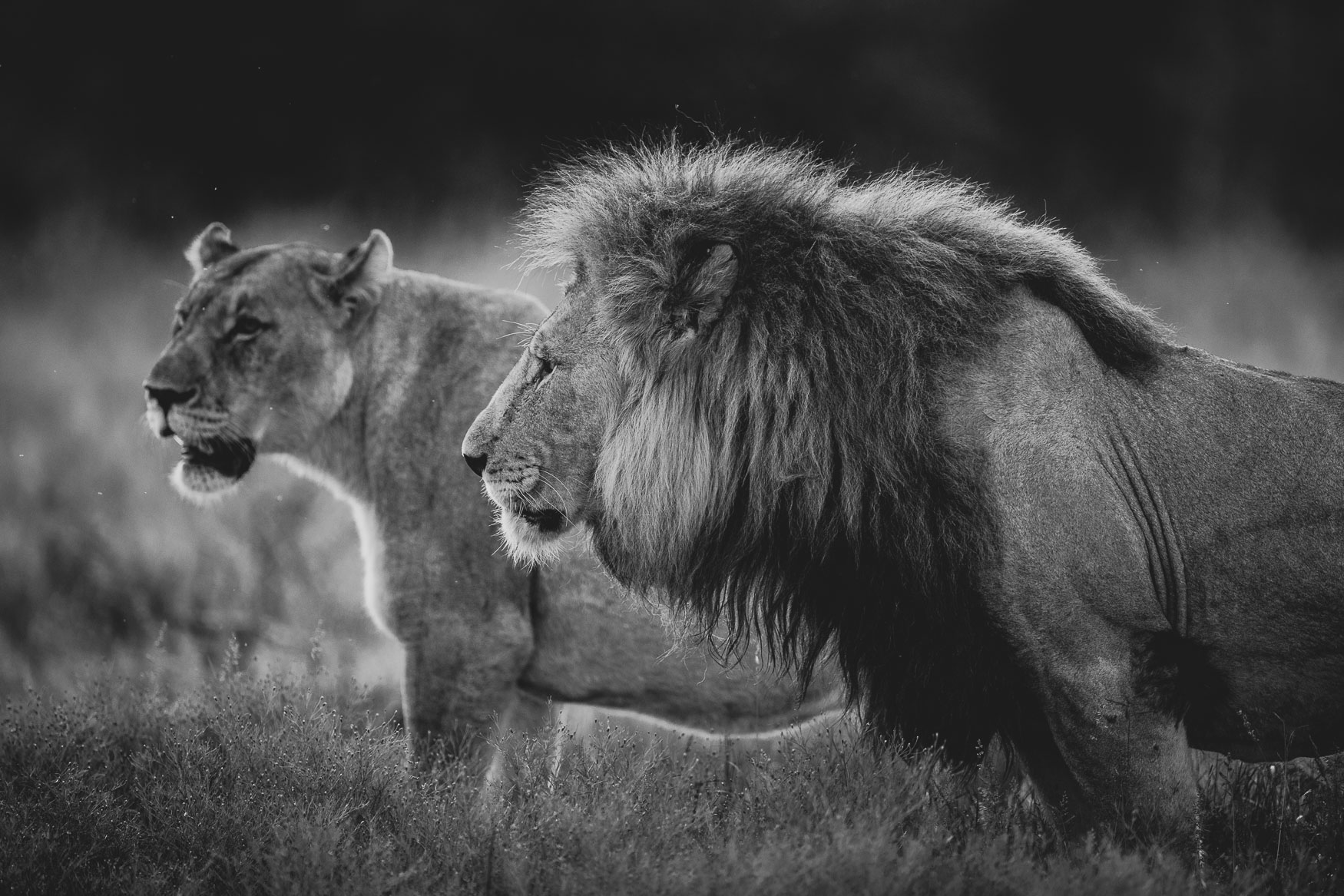
This image is made entirely by the combination of focal length (600mm) and the maximum aperture of F4.0 of the Canon 6000mm F4.0 IS III.
Subject separation is a massive tool in the wildlife photographers toolbox and can make or break an image. In this instance I opted to focus on the male lion in the foreground, leaving the lioness standing slightly behind him soft and blurred. The end result is a powerful image where the viewer is immediately drawn to the dominant male before venturing "deeper" into the frame and focussing on the lioness before returning to what is the sharpest and most dominant feature in the frame (again, this is full frame with no crop).
The background behind the pair seems to fade away and has zero presence in terms of pulling one's eye away from the lions. For me, thats what makes this very simple and basic image so powerful.
Had this same shot been captured at F7.1 or 11 there would not have been nearly as much separation between the subjects themselves or the subjects and the background.
F4.0 for the win!
I also captured the alternative interpretation of this image where the lioness was the focal point by simply shifting the AF area to the left using the touchscreen on the back of the Canon EOS R6 but found this composition to be the more powerful of the two.
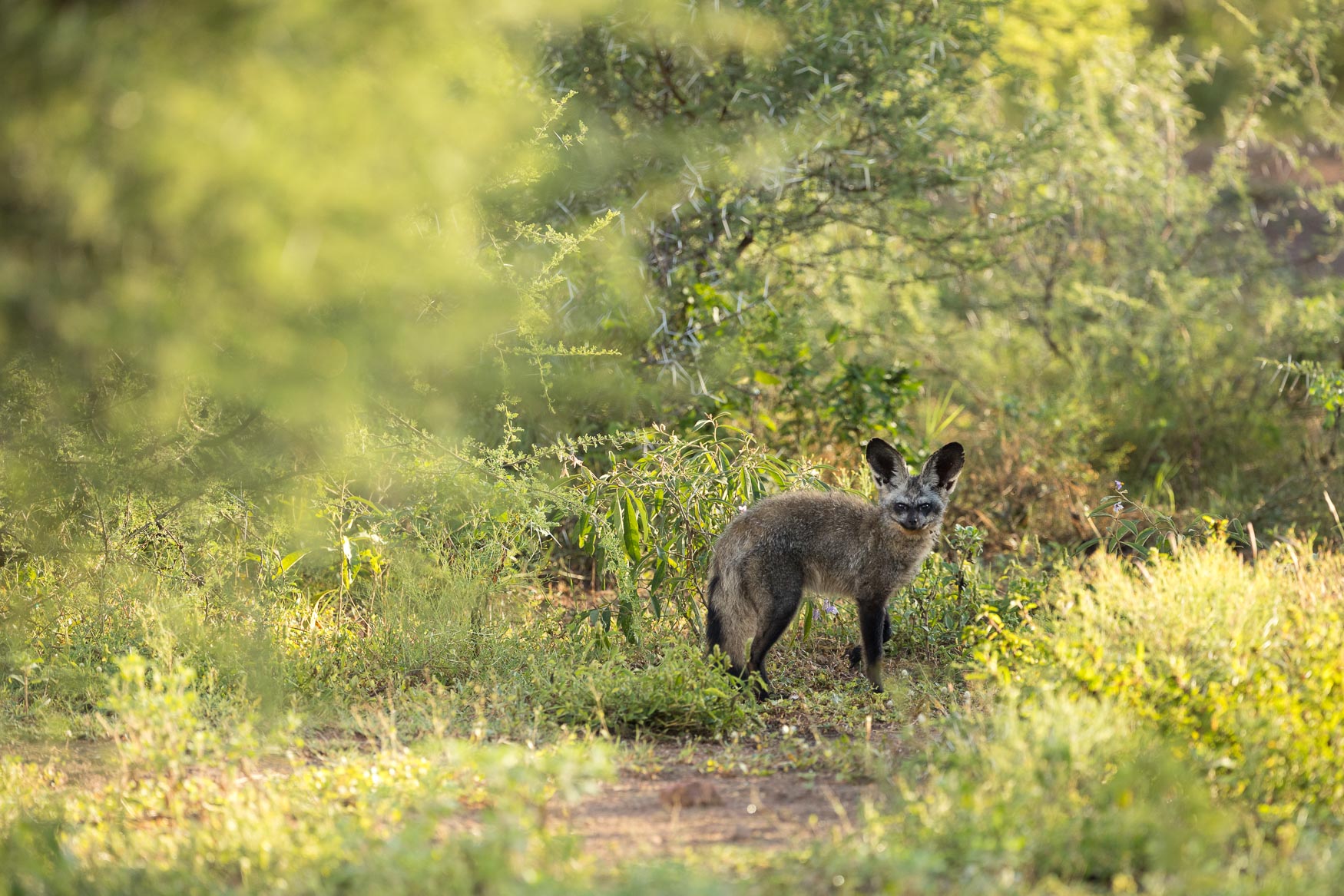
One of the main reasons I opted for the 600mm F4.0 on this trip is the fact that the bush is very dense and thick after all of the rains we have had. The combination of focal length and maximum aperture combine very well with dense vegetation and allow one to make use of natural framing - even if that framing is simply because you don't have any other window of opportunity.
This shy little Bat-Eared Fox only stared at us for a brief moment before heading off into the bush and I was able to, hand held, capture this image which makes use of the green foreground to the left of frame to add an interesting context and sense of place to the frame.
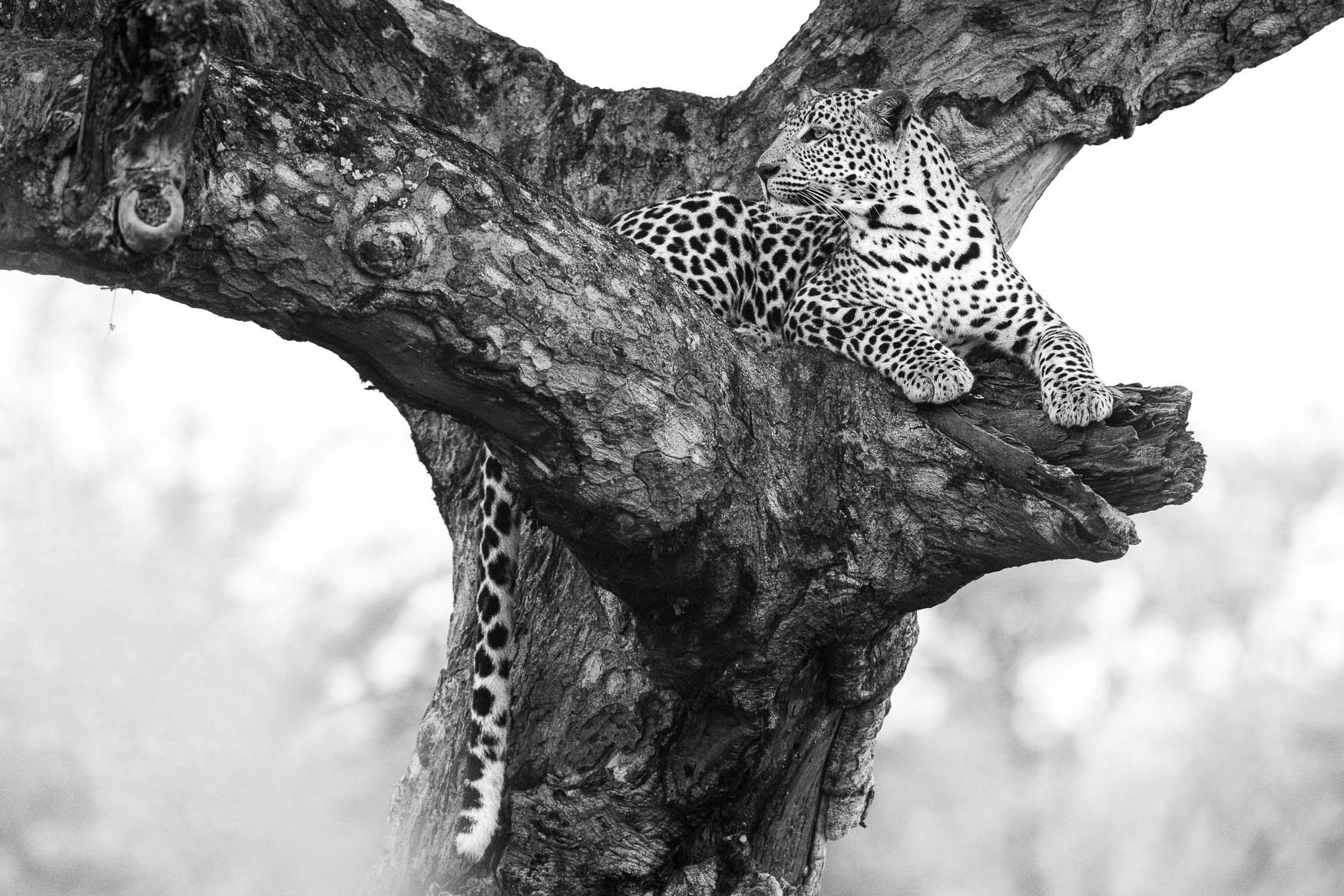
Another full frame image shot at 600mm which, as you can see, was VERY tight - check the tip of that tail!
Usually this sort of scene on a DSLR would have required the good old "focus and recompose" technique, locking focus on the head using the top right AF point before recomposing. This technique works well most of the time but when you're shooting at large apertures and at close proximity the slightest change in composition can have a negative impact on the sharpness of the image and accuracy of your AF. In addition to that, image quality often suffers towards the edge of the frame with things like distortion and vignetting.
In this instance I set the camera and lens onto a bean bag and used the tilt-flip screen to tap on the face of the leopard and achieve accurate autofocus despite the subject being located in the top right of the frame.
You'll see that this was captured at ISO 12800. Thats fairly high on any DSLR but I didn't even bat an eyelid at the Auto ISO value I was given. Given that I was at F5.0 and only overexposed by 1/3 you'll gather that there was very little light on this scene.
You'll hopefully also ask yourself "why on earth was he using a shutter speed of 1/1600 of a second to photograph a relaxed leopard?" and you're absolutely right. Schoolboy error. I simply didn't check my shutter speed value soon enough. In my defense, I was quite surprised by this sighting as its a right up there with the best I have had in Madikwe!
Luckily the image quality at higher ISO values of both the R5 and particularly the Canon EOS R6 are way better than what you'd be used to with most DSLR's.
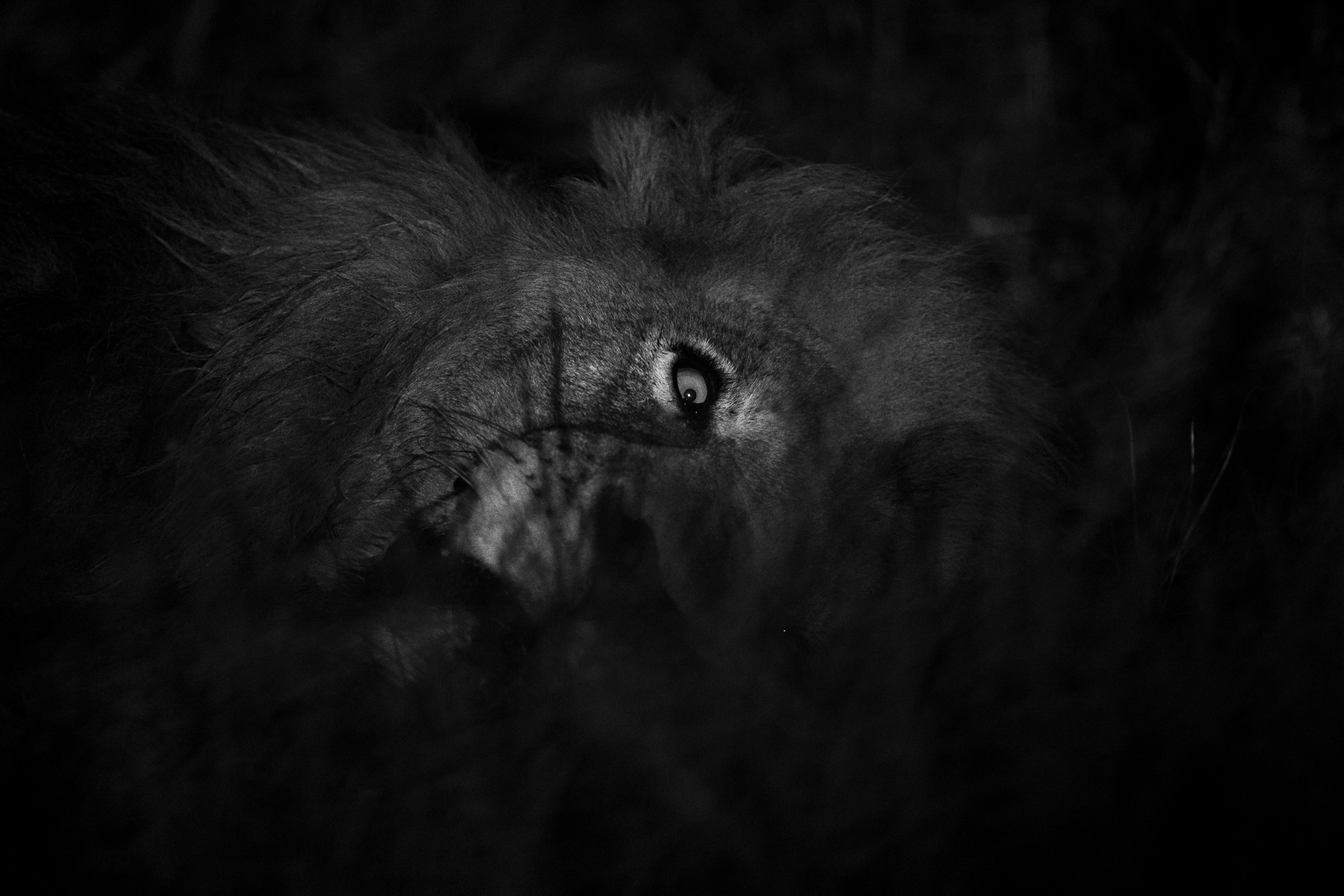
One of the great things about safaris in South Africa is that they continue after dark with the ethical use of a spotlight. We didn't get many opportunities to shoot after dark on this most recent safari but we did spend a bit of time with this male lion who, based on the size of his tummy, had had a fair sized meal and was not in any rush to do anything other than sleep - typical right?
You've got to work with what you've got and, with a bit of fill light from the spotlight, we were able to get some detail in the eye and muzzle. Shooting in full manual I opted for a darker than usual image with the aim of editing to accentuate the orange highlights and darken the greens in my Black and White conversion.
I'm quite happy with the way it turned out in the end and, again, this image is made by the soft foreground and background which leaves the viewer with no other option but to be drawn directly to the high contrasting and tack sharp detail of the eye.
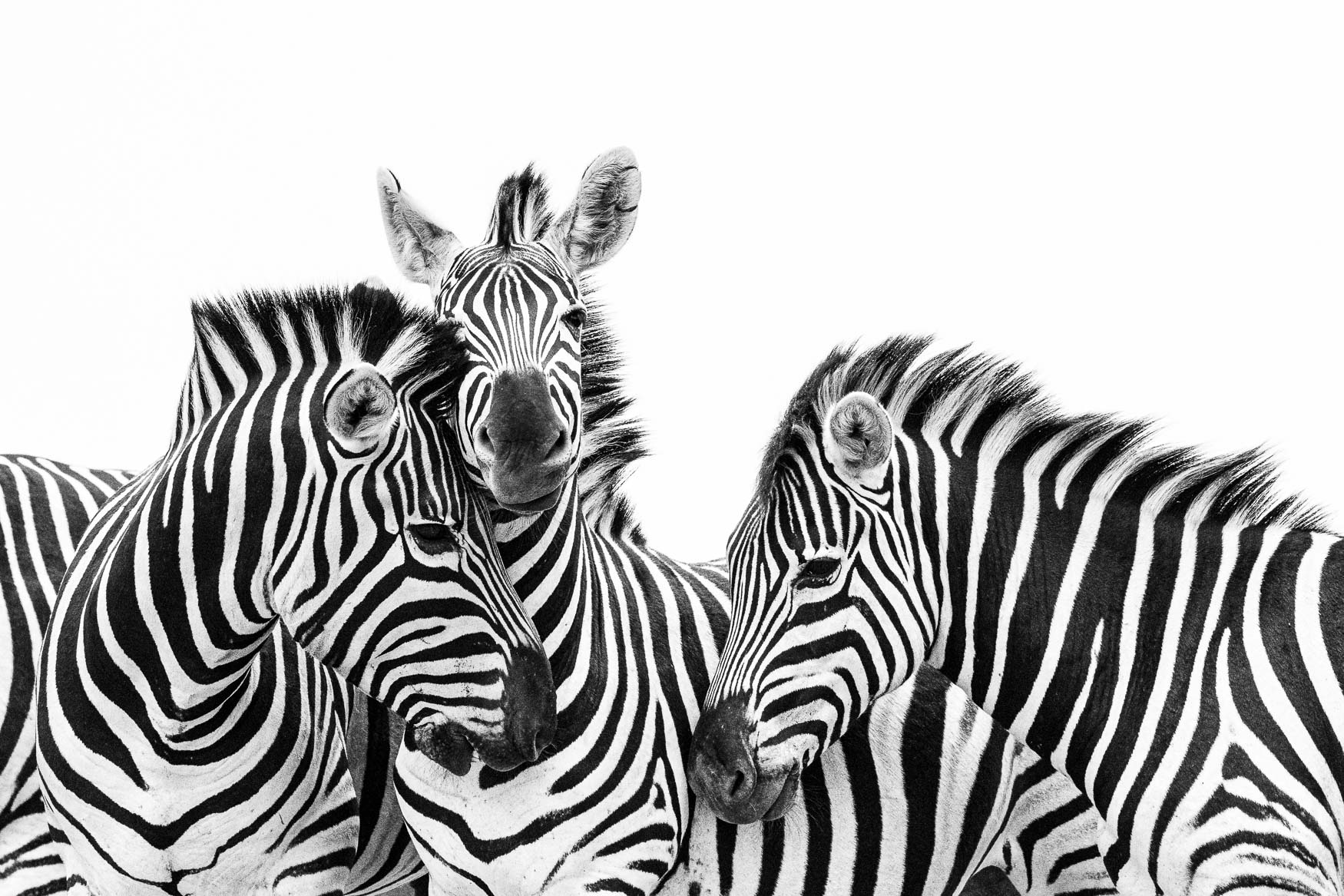
An overcast and rainy afternoon meant that our visit to one of the main dams in the area didn't quite provide the usual action one would expect on a hot summers afternoon.
You have to work with what you have in front of you and the combination of strong winds from an imminent storm (which we eventually did get caught in for about 10 minutes or so) and a small group of zebra that were standing elevated on the dam wall provided the ideal opportunity for a high-key Black and White image.
We overexposed rather aggressively in order to blow out details in the highlights and provide the clean background whilst simultaneously adding to the intensity of the whites and contrast of these against any blacks.
A simple edit in Lightroom to recover the richness in the blacks and darker areas before adding contrast to both the Lights and Darks and we are left with this final image.
The increased aperture value (F10) was to ensure that there was sufficient detail and depth across multiple subjects rather than only having one or a small portion of one subject sharp and in focus. That, coupled with the fast shutter speed needed to freeze any and all movement (wind or other), and overexposure value is why I once again found myself shooting at ISO 12800.
I hope you've enjoyed seeing these images and my thoughts behind each of them and that you've perhaps found some inspiration or just learnt more about some of the benefits of the Canon EOS R6.

I have been considering the R5 fir ages but then thought do I really need the R5 if the R6 has so many similar features …. the main reason for the R5/6 is for the autofocus… do you think there is a real difference between the R5 and R6 and is it worth it … the difference is enough for a really excellent piece of glass ! Also do you think there may be an R6 Mk II that may have a slightly bigger sensor MP wise ?
Hi Nick
Both cameras are excellent and don’t discount the R6 because of the 20MP – its pretty much the same sensor that you’ll find in the 1DX MKIII and thats nothing to turn your nose up at.
R6MKII – regardless of what comes down the line the specs and performance of the R6 will remain the same (or possibly improve with firmware updates) and I can assure you it is a great piece of kit. Your comment on looking at an R6 and a good piece of new (possibly RF) glass is a good one and certainly worth considering.
Trust me when I say that mirrorless is the future. And it is here.
I have been considering the R5 fir ages but then thought do I really need the R5 if the R6 has so many similar features …. the main reason for the R5/6 is for the autofocus… do you think there is a real difference between the R5 and R6 and is it worth it … the difference is enough for a really excellent piece of glass ! Also do you think there may be an R6 Mk II that may have a slightly bigger sensor MP wise ?
Hi Nick
Both cameras are excellent and don’t discount the R6 because of the 20MP – its pretty much the same sensor that you’ll find in the 1DX MKIII and thats nothing to turn your nose up at.
R6MKII – regardless of what comes down the line the specs and performance of the R6 will remain the same (or possibly improve with firmware updates) and I can assure you it is a great piece of kit. Your comment on looking at an R6 and a good piece of new (possibly RF) glass is a good one and certainly worth considering.
Trust me when I say that mirrorless is the future. And it is here.
I currently have the Eos R and looking at upgrading to the R6 would you say I am making the right decision? We only do wildlifephotography
Hi Zander
Without a shadow of a doubt, the R6 is a massive upgrade from the R and I think you will be pleased with every aspect of the autofocus, EVF, IBIS and image quality. Enjoy!
I currently have the Eos R and looking at upgrading to the R6 would you say I am making the right decision? We only do wildlifephotography
Hi Zander
Without a shadow of a doubt, the R6 is a massive upgrade from the R and I think you will be pleased with every aspect of the autofocus, EVF, IBIS and image quality. Enjoy!
Thank you very much
I have purchased the R6 cant wait to make use of it. Some guys told me that they struggle with the animal eye focus with Leopards. Do you know anything about it?
Hi Zander
The eye focus does struggle to lock onto the eye for some subjects like Zebra, Leopard and Giraffe which have a lot of patches of contrast around the face and eyes. In these instances the camera uses a larger block and locks onto the head or reverts to the usual “dancing” AF points which lock onto contrast around the face.
I hope you are enjoying your new camera!
Thank you very much
I have purchased the R6 cant wait to make use of it. Some guys told me that they struggle with the animal eye focus with Leopards. Do you know anything about it?
Hi Zander
The eye focus does struggle to lock onto the eye for some subjects like Zebra, Leopard and Giraffe which have a lot of patches of contrast around the face and eyes. In these instances the camera uses a larger block and locks onto the head or reverts to the usual “dancing” AF points which lock onto contrast around the face.
I hope you are enjoying your new camera!
Thank you for the reply
I managed to get the R6 and the sigma 60-600mm Sport.
Hope this combo works well
Thank you for the reply
I managed to get the R6 and the sigma 60-600mm Sport.
Hope this combo works well